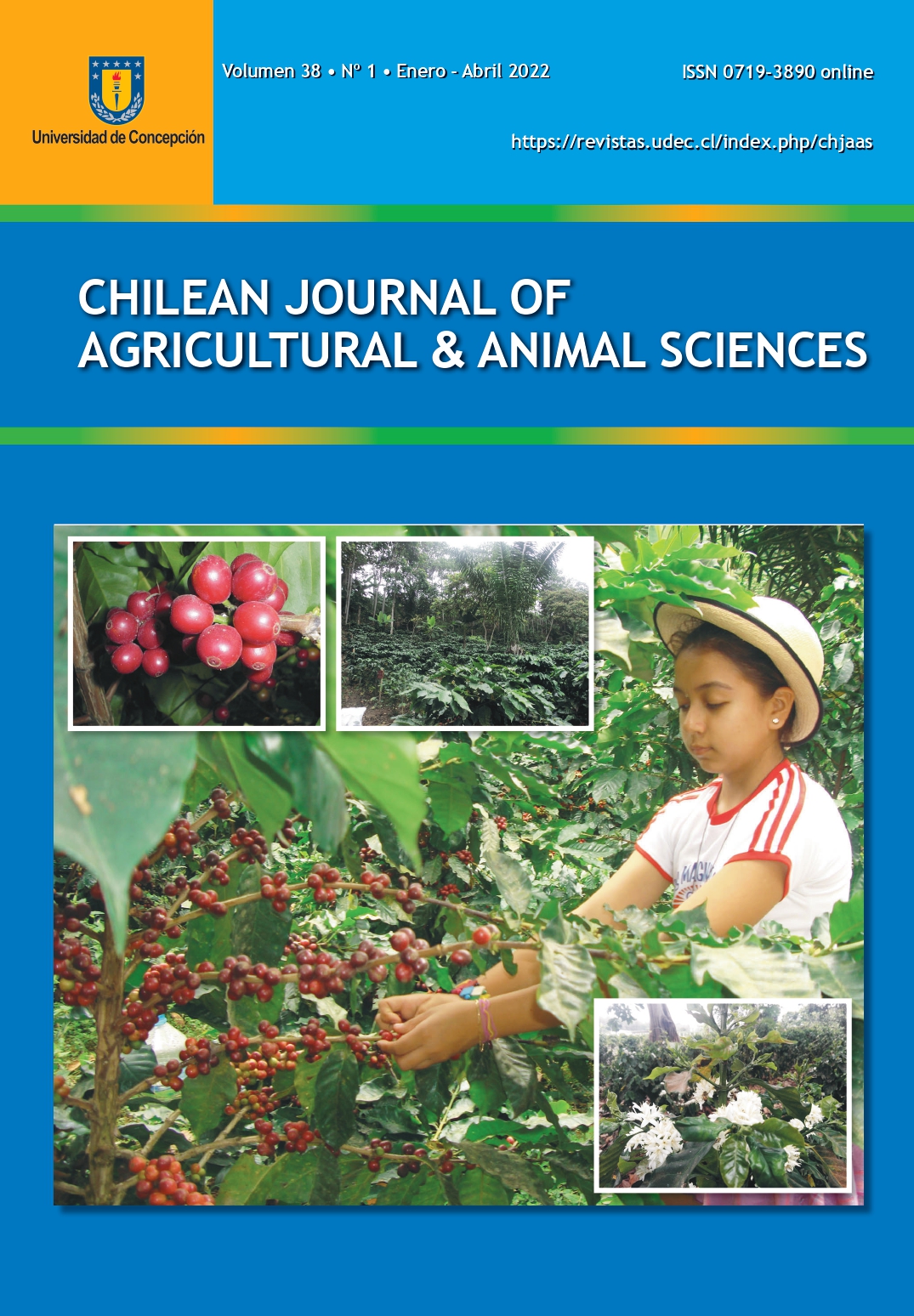INSECT-RESISTANT MAIZE HYBRIDS TOLERANT TO GLUFOSINATE DUE TO THE pat GENE, UNDER DIFFERENT GLUFOSINATE RATES
DOI:
https://doi.org/10.29393/CHJAAS38-4IRAM70004Palabras clave:
glufosinate-tolerant maize, phosphinothricin N-acetyltransferase, glutamine synthetase, selectivity, agronomic performanceResumen
The use of glufosinate may have different effects on maize, with greater symptoms of injury for technologies with lower expression of the pat gene. As tolerance may vary with technology, it is important to investigate the selectivity of glufosinate in maize hybrids with the pat gene (resistant to insects). The objective of this study was to evaluate the selectivity of glufosinate rates applied in post-emergence, in insect-resistant transgenic maize with the pat gene. The experiment was carried out in Palotina, state of Paraná, Brazil, in 2020. A randomized block design with a factorial scheme (9x4) was used. The treatments were 9 maize hybrids and 4 glufosinate rates (0, 500, 700 and 1,000 g of active ingredient [ai] ha-1). Injury symptoms, plant height, 1,000-grain mass and yield were evaluated. The results showed that injury increases with increasing glufosinate rates. For plant height and 1,000-grain mass, a significant effect was detected only for hybrids, while there was no effect on yield, even at the highest rates. Glufosinate was selective for insect-resistant maize hybrids with the pat gene, up to the rate of 1,000 g ai ha-1, presenting initial injuries and some differences between maize hybrids. However, there was no impact on yield.
Descargas
Publicado
Cómo citar
Número
Sección
Derechos de autor 2022 Universidad de Concepción

Esta obra está bajo una licencia internacional Creative Commons Atribución 4.0.







